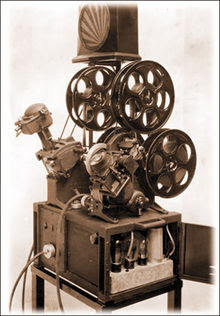One of the earliest and biggest developments in film was when Directors began editing their films which all started with Edwin Porter's "The Life of an American Fireman" where he used cross cutting; the shots were split between a woman and her child in a house where a fire began and where the firemen were travelling to the womans home.
This gave Directors additional control with endless possibilities on how to adapt future films.

Going back a few years to 1910, D.W.Griffith directed a silent movie known as "The Birth of a Nation" which gave films a whole new meaning and understanding, as Griffith was able to interact with the audience through emotions and this was done with the simple camera shot of a close up.
The audience began to feel more connected to the films they watched when directors used juxtaposition (two different objects can be used to express and emotion to the audience).
In the 1940's to the 1950's editing was left to the studios rather than left to the directors, but what was different then, was that film editing was left to the woman, as the equipment looked like machines, and in the 50's machinery was only seen to be used by women. However this began to change in the 60's when editors begun working with directors closely and it became more of a male role to be an editor.
Editors would spend an average of 200 hours looking through film for a feature length movie. The film tape was so long that it could reach from LA to Las Vegas. They could spend months, even years at time editing shots for an average 2 hour film.
Since the 1980's editors have used computer technology software such as Avid and Final Cut Pro to edit films, which would only take editors a few weeks and in extreme cases; days.
Editing helps bring emotion and suspense to the audience and makes them believe that they are part of the action or story.
Cutting for Action - ("Terminator 2: Judgement Day" John Connor meets the terminator for the first time). This sequence is in slow motion and because of this editing style it creates an intense moment for the characters, which pulls the audience into the story and gets them believing in the story.
(INSERT VIDEO HERE - TERMINATOR)
Cutting for Suspense - Sound - When a character is in a dangerous situation or closed in space their hearing becomes more acute to their surroundings and by editing the sound, the audience will hear what the character hears at their level, so this may be a very intense loud noise, or a quiet space with only digetic sound.
No comments:
Post a Comment